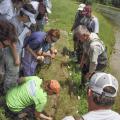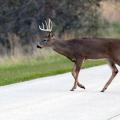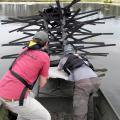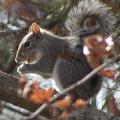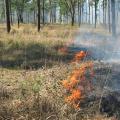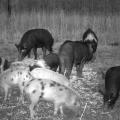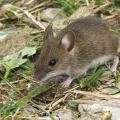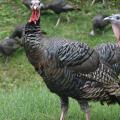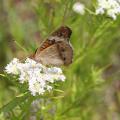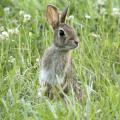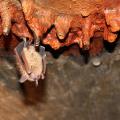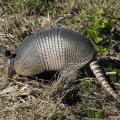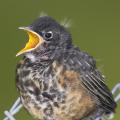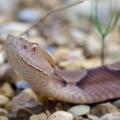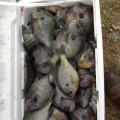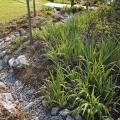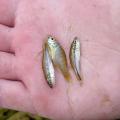Extension Outdoors from 2015
By Adam Rohnke
Urban Wildlife Specialist
MSU Extension Service
MISSISSIPPI STATE -- Funding and manpower are the most common limiting factors in conducting research. These factors are especially limiting for wildlife and fisheries research projects, which cover vast geographic areas, involve secretive animals and generate large quantities of information.
MISSISSIPPI STATE -- According to the National Christmas Tree Association, American consumers purchase nearly 30 million real trees annually from one of more than 15,000 Christmas tree farms. Real-tree enthusiasts cite three main reasons for their yearly choice: tradition, fresh pine scent and appearance.
Selecting a real tree is also an environmentally friendly choice. Real Christmas trees are 100 percent biodegradable and can be recycled in a variety of ways.
The National Christmas Tree Association offers these little-known facts about real trees:
MISSISSIPPI STATE -- Wildlife on roadways can be as hazardous to motorists as texting or reckless drivers.
State Farm Insurance reported Mississippi ranks sixth in the nation for wildlife-vehicle related accidents. More than one third of Mississippi’s 70,000 auto crashes are due to collisions with wildlife, specifically with white-tailed deer. One in 84 people statewide will be in a crash involving wildlife annually.
By Wes Neal
Associate Extension Professor, Fisheries
MSU Extension Service
MISSISSIPPI STATE -- As a fisherman, which is more pleasing: casting mindlessly into an open expanse of water, or carefully casting around a sunken log where you feel sure that a lunker is waiting to inhale your bait?
Catching fish is only part of the overall experience; aesthetics play an important role as well.
STARKVILLE, Miss. -- Bare trees in the winter provide clear views of squirrels chasing each other up, down and every which way.
Mid-December through January is a common mating period for eastern gray squirrels, which explains the heightened activity. Baby squirrels are born about six weeks after mating occurs.
Typically, squirrels will build nests for these babies in the forks of tree branches or in the hollows of tree trunks. Their simple nests are fashioned mostly out of dry leaves and twigs.
STARKVILLE, Miss. -- Although it may sound contradictory, burning the landscape actually improves habitat quality for many of Mississippi’s wildlife species.
I’m often asked, “How can destroying the habitat with fire help wildlife?” Another common question is, “Where will the wildlife go if you’re burning down their homes?”
STARKVILLE, Miss. -- Wild pigs are a growing problem for property owners, land managers and farmers throughout Mississippi. Because of their high reproductive rate, they can be difficult to control.
STARKVILLE, Miss. -- “Say your prayers, varmint!”
If you recognize this quote, you know its source: Looney Tunes cartoon character Yosemite Sam, who never got the upper hand in his dealings with Bugs Bunny. Sometimes it seems we -- like Yosemite Sam -- battle with “varmints” that live around us. This column will give you a little insight into why the battle rages and what you can do to get the upper hand.
By James E. “Jim” Miller
Professor Emeritus, Department of Wildlife, Fisheries and Aquaculture
MSU Extension Service
STARKVILLE, Miss. -- With spring gobbler season quickly approaching, here are some precautions hunters need to remember before they head to the forest.
STARKVILLE, Miss. -- For many Mississippians, this is the least likely time of the year to venture outside to explore. Some feel it is much too cold and others feel it is too wet, but for a lover of the outdoors, this is a perfect time of year to hit the trail.
It all comes down to being prepared for your outing and keeping a positive mental attitude.
By Jeanne Jones, Professor, and Daryl Jones, Extension Professor
MSU Forest and Wildlife Research Center
STARKVILLE, Miss. -- Native plants can add attractive accents to Mississippians’ yards and provide excellent food sources for birds and butterflies.
STARKVILLE, Miss. -- It looks like spring has finally sprung in Mississippi, and that means increased boat traffic on the waterways.
STARKVILLE, Miss. -- With spring holidays just around the corner and garden season quickly approaching, there is no better time to discuss Mississippi’s resident rabbit, the eastern cottontail.
Many people think rabbits are a type of rodent because they have a tooth structure similar to that seen in squirrels, rats and mice. They also have a tendency to gnaw on plants, wood and other structures. However, rabbits are classified as lagomorphs because they have two pairs of upper and lower front teeth, and their food goes through a double-digestion process.
By Jeanne Jones, Professor, and Daryl Jones, Extension Professor
MSU Forest and Wildlife Research Center
Mississippi State University
STARKVILLE, Miss. -- On warm Mississippi days as daylight gives way to dusk, flying, furry creatures -- the centerpieces of our Halloween decorations -- take wing in pursuit of mosquitoes and other pests.
STARKVILLE, Miss. -- It can climb, dig, swim and run, but in spite of its physical skills, the nine-banded armadillo is frequently roadkill.
You might not have even known it is a member of the mammal class. It bears very little resemblance to any other mammal in that it is not covered in fur or hair. Instead, it has nine bony armor rings covering the area between its shoulder and hip. Its long tail has an additional 12 bony rings.
STARKVILLE, Miss. -- April showers bring May flowers, as the old adage tells us. However, spring also brings baby wild animals.
Longer days and warmer temperatures are triggers that cause birds and other wildlife to mate and have young. Winter conditions are harsh, but spring has softer days and plentiful food, conditions more ideal for raising offspring.
STARKVILLE, Miss. -- Warmer weather means wild creatures of all shapes and sizes are on the move, which makes it a whole lot more likely you will encounter a snake during the spring or summer.
RAYMOND, Miss. -- One of the most common questions people ask about lakes and ponds is whether they need to apply fertilizer to promote fish population growth.
“Do I have to fertilize my lake and if so, what should I use and how much of it should be used?” I get these questions every year, and my response typically is, “How much fishing pressure does it receive? Are there any weed/invasive plant issues?” If there are just a few folks using the lake and not much fishing pressure, fertilizer may not be necessary.
By Beth Baker
Research Associate
MSU Department of Wildlife, Fisheries and Aquaculture
STARKVILLE, Miss. -- As many regions of the country face drought conditions this summer, it’s important to remember to use water efficiently.
Mississippi sees a large amount of rainfall each year compared to other states. But only a small portion of that moisture makes it back into the stored groundwater, which is the primary supply for household usage, including water for lawns and gardens. Luckily, having a beautiful yard doesn’t have to mean using a lot of water.
STARKVILLE, Miss. -- A quality fishing pond requires a balance in size and abundance of predator species and their prey -- usually largemouth bass and bluegill, respectively.
A pond owner or manager needs to have a basic understanding of the size range and species composition in the pond to maintain quality fishing. An annual checkup of the fish will yield information to help identify and track problems with the fish population.

